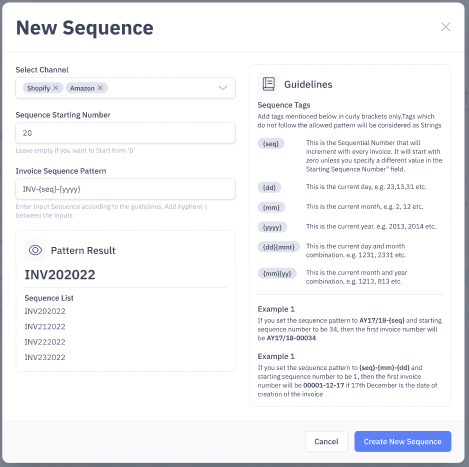Invoice Templates
- 28 Nov 2023
- Print
- DarkLight
- PDF
Invoice Templates
- Updated on 28 Nov 2023
- Print
- DarkLight
- PDF
Article summary
Did you find this summary helpful?
Thank you for your feedback!
Where can I see & configure my invoice templates?
This section allows you to:
- Set invoice templates for specific channels
- Set Invoice Sequence Numbers correctly
1. How can I configure the invoice template?
Each channel can have its invoice template. But a channel can have only one invoice template associated with it.
- Main Menu > Settings > Invoice Templates > Click New Template on the top right corner.
- The Default template will apply to all channels except when it is overridden by another template for a particular channel.
- Name your invoice template and select the channel in which this template is applicable. Add all the configuration details to the template.
You can configure the following sections:
- Design – Basic header, footer, and logo, authorized signature
- Company – Company name, facility address, 'Contact Us' details, tax identification number, email address, and contact number.
- Customer – Choose the customer details that you wish to display.
- Data – The data that appears from the underlying invoice information.
5. Click Create New Template
2. How can I configure Invoice Sequence?
You can set different invoice sequence numbers for your sales channels depending on your needs.
To create a new sequence and assign it to any channel:
- Navigate to Main Menu > Settings > Invoice Templates > Click Add Sequence
- Set the Channel, Sequence Starting Number and Invoice Sequence Pattern.
For Example – If you set the sequence pattern to {seq}-{mm}-{dd}, with the starting sequence number as 1 and 17th December as the date of creation of the invoice, then the first invoice number will read as 00001-12-17. - Click Create New Sequence
The new Invoice sequence will apply only for Invoices generated after the sequence was set or updated. All Invoices created before that will have the Invoice number based on the prior setting.

Was this article helpful?

